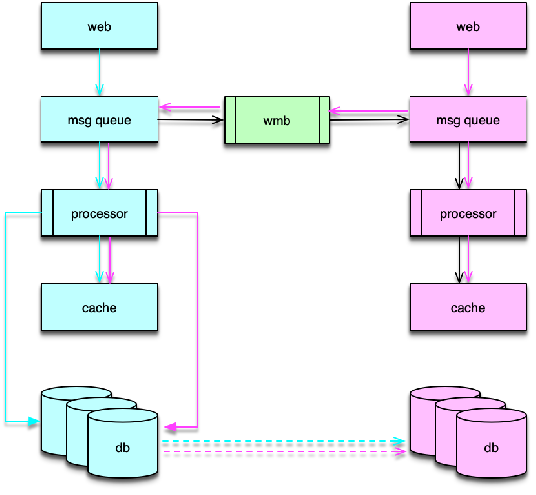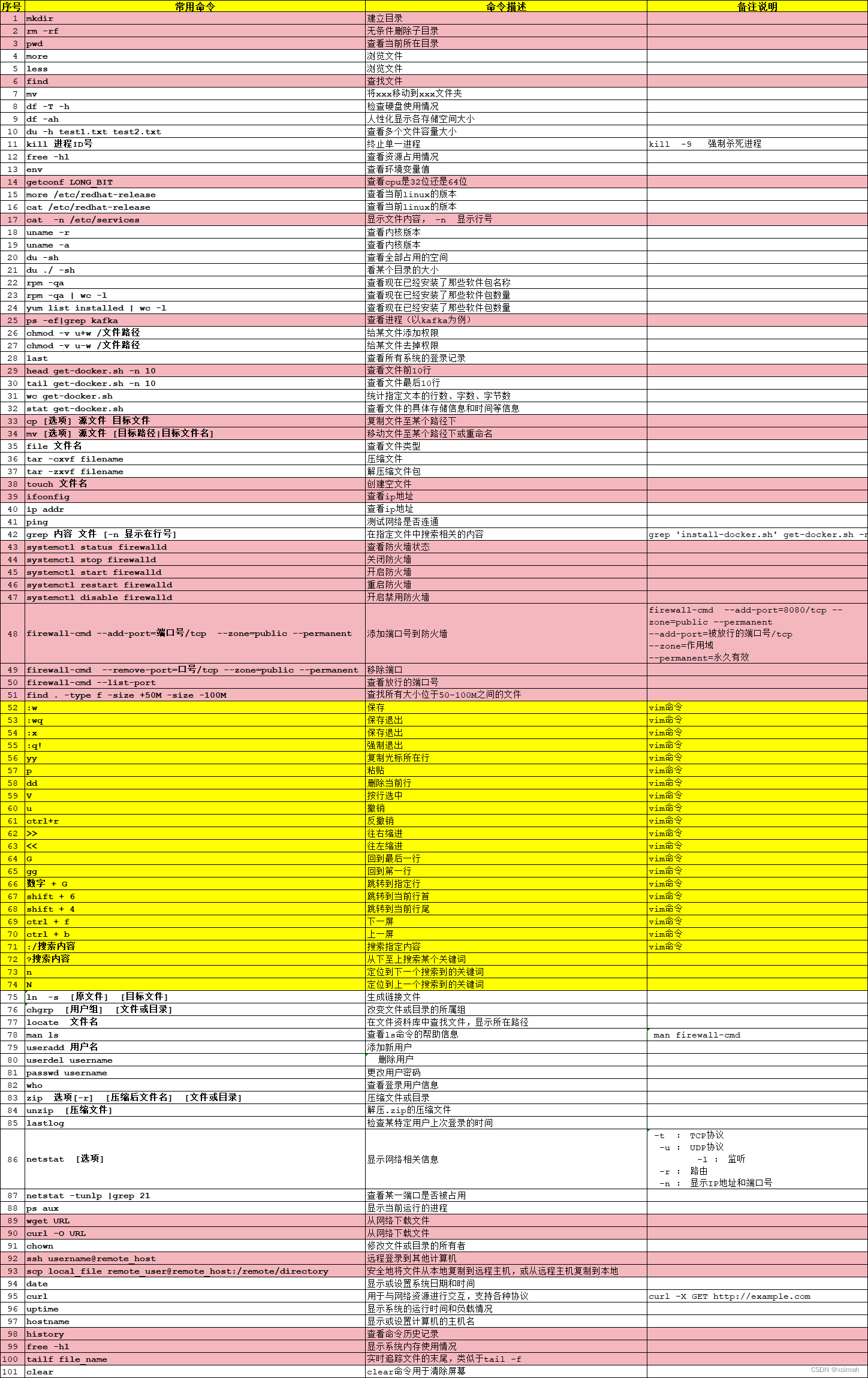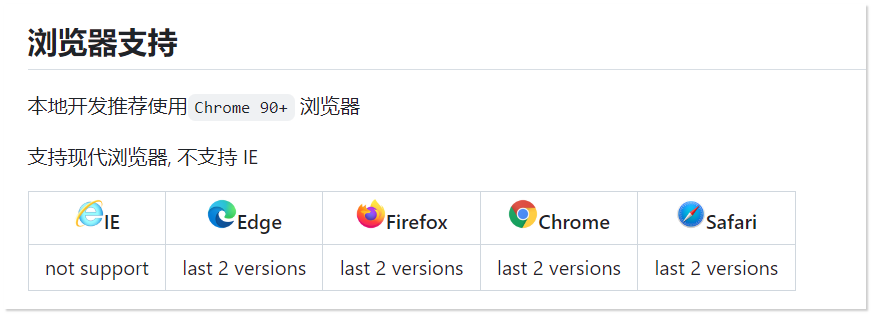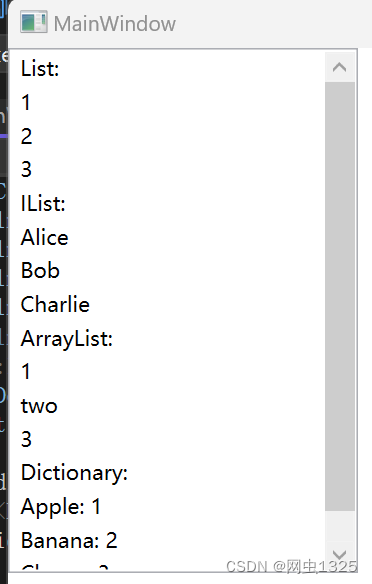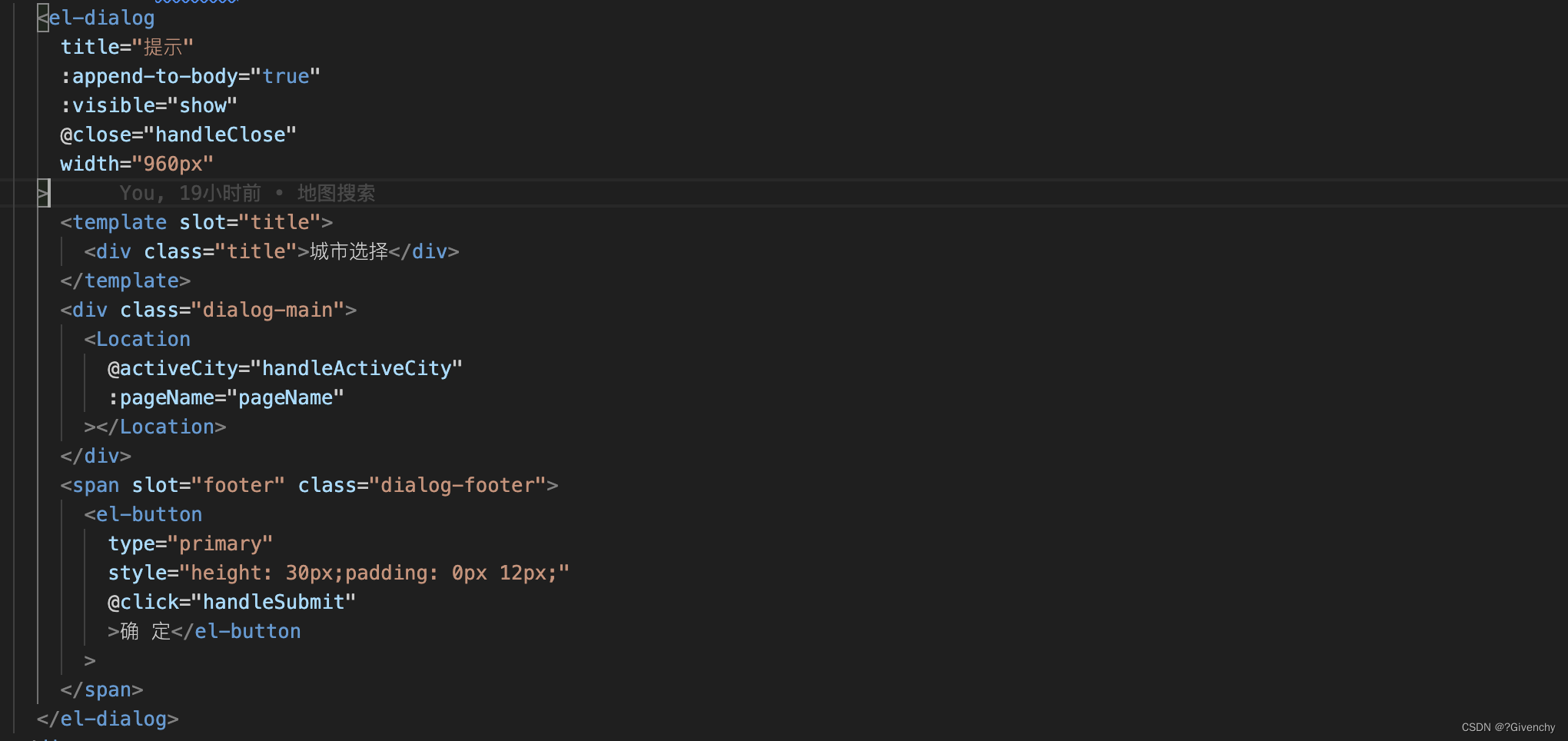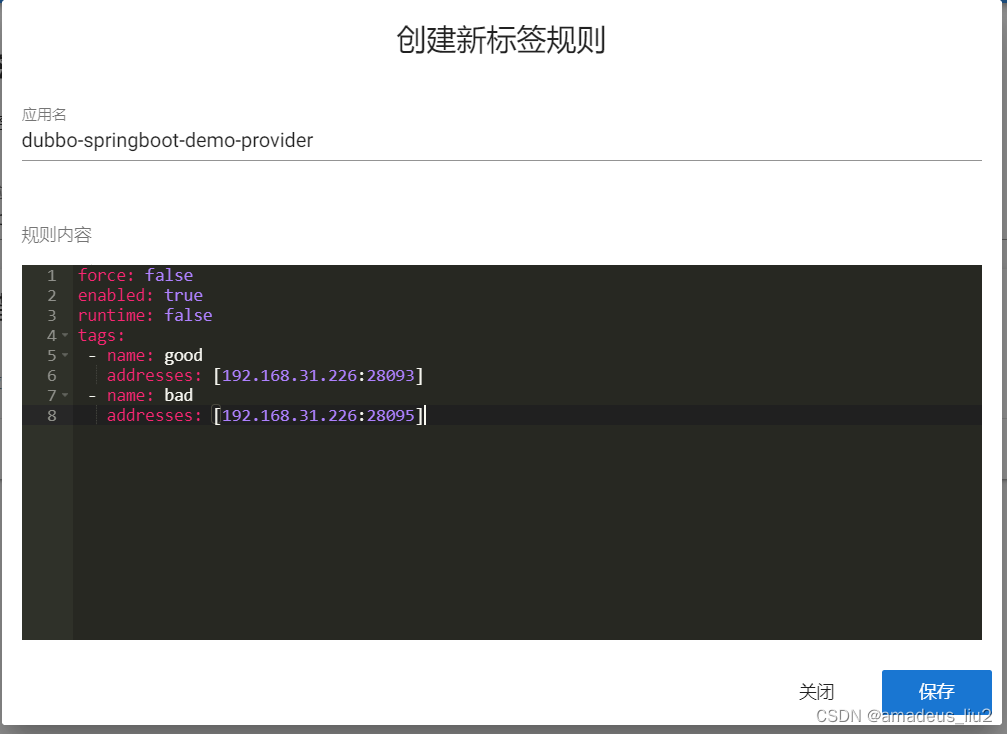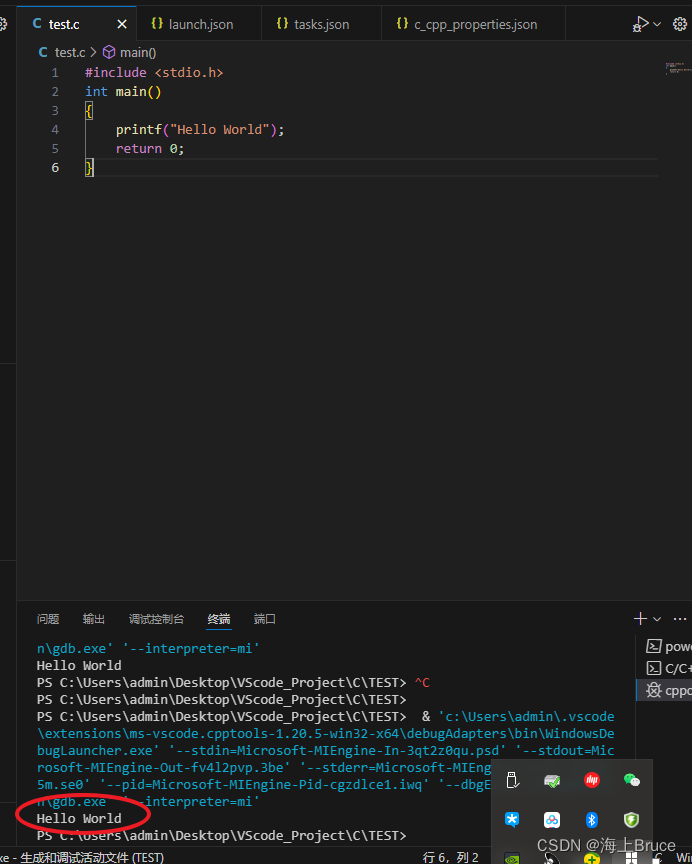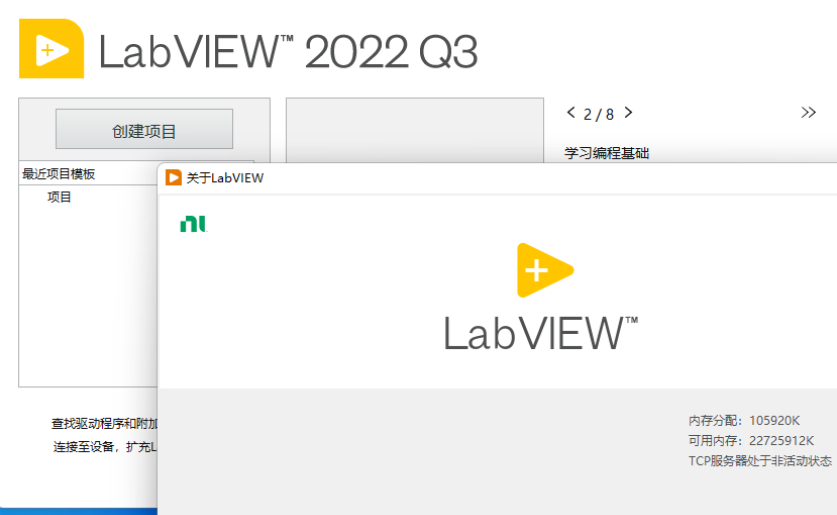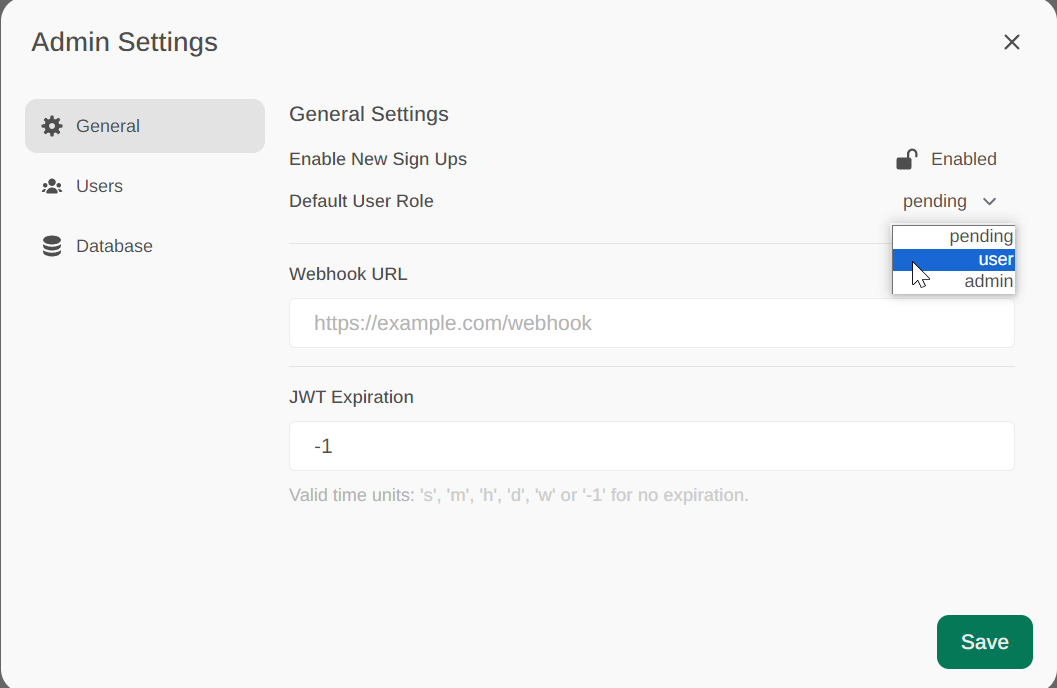基于机器学习模型预测信用卡潜在用户(XGBoost、LightGBM和Random Forest)
随着数据科学和机器学习的发展,越来越多的企业开始利用这些技术来提高运营效率。在这篇博客中,我将分享如何利用机器学习模型来预测信用卡的潜在客户。此项目基于我整理的代码和文件,涉及数据预处理、数据可视化、模型训练、预测及结果保存的完整流程。
项目概述
本项目旨在使用机器学习模型预测哪些客户最有可能成为信用卡的潜在客户。我们将使用三个主要的机器学习模型:XGBoost、LightGBM和随机森林(Random Forest)。以下是项目的主要步骤:
1、数据预处理
2、数据可视化
3、模型训练
4、模型预测
5、模型保存
1. 数据预处理
数据预处理是机器学习项目中至关重要的一步。通过清洗和准备数据,我们可以提高模型的性能和准确性。
import numpy as np # linear algebra
import pandas as pd # data processing, CSV file I/O (e.g. pd.read_csv)
import matplotlib.pyplot as plt
import seaborn as sns
#Loading the dataset
df_train=pd.read_csv("dataset/train_s3TEQDk.csv")
df_train["source"]="train"
df_test=pd.read_csv("dataset/test_mSzZ8RL.csv")
df_test["source"]="test"
df=pd.concat([df_train,df_test],ignore_index=True)
df.head()
| ID | Gender | Age | Region_Code | Occupation | Channel_Code | Vintage | Credit_Product | Avg_Account_Balance | Is_Active | Is_Lead | source | |
|---|---|---|---|---|---|---|---|---|---|---|---|---|
| 0 | NNVBBKZB | Female | 73 | RG268 | Other | X3 | 43 | No | 1045696 | No | 0.0 | train |
| 1 | IDD62UNG | Female | 30 | RG277 | Salaried | X1 | 32 | No | 581988 | No | 0.0 | train |
| 2 | HD3DSEMC | Female | 56 | RG268 | Self_Employed | X3 | 26 | No | 1484315 | Yes | 0.0 | train |
| 3 | BF3NC7KV | Male | 34 | RG270 | Salaried | X1 | 19 | No | 470454 | No | 0.0 | train |
| 4 | TEASRWXV | Female | 30 | RG282 | Salaried | X1 | 33 | No | 886787 | No | 0.0 | train |
1. Checking and Cleaning Dataset :
#Checking columns of dataset
df.columns
Index(['ID', 'Gender', 'Age', 'Region_Code', 'Occupation', 'Channel_Code',
'Vintage', 'Credit_Product', 'Avg_Account_Balance', 'Is_Active',
'Is_Lead', 'source'],
dtype='object')
#Checking shape
df.shape
(351037, 12)
#Checking unique values
df.nunique()
ID 351037
Gender 2
Age 63
Region_Code 35
Occupation 4
Channel_Code 4
Vintage 66
Credit_Product 2
Avg_Account_Balance 162137
Is_Active 2
Is_Lead 2
source 2
dtype: int64
#Check for Null Values
df.isnull().sum()
ID 0
Gender 0
Age 0
Region_Code 0
Occupation 0
Channel_Code 0
Vintage 0
Credit_Product 41847
Avg_Account_Balance 0
Is_Active 0
Is_Lead 105312
source 0
dtype: int64
Observation:
Null values are present in Credit _Product column.
#Fill null values in Credit_Product feature
df['Credit_Product']= df['Credit_Product'].fillna("NA")
#Again check for null values
df.isnull().sum()
ID 0
Gender 0
Age 0
Region_Code 0
Occupation 0
Channel_Code 0
Vintage 0
Credit_Product 0
Avg_Account_Balance 0
Is_Active 0
Is_Lead 105312
source 0
dtype: int64
#Checking Datatypes and info
df.info()
<class 'pandas.core.frame.DataFrame'>
RangeIndex: 351037 entries, 0 to 351036
Data columns (total 12 columns):
# Column Non-Null Count Dtype
--- ------ -------------- -----
0 ID 351037 non-null object
1 Gender 351037 non-null object
2 Age 351037 non-null int64
3 Region_Code 351037 non-null object
4 Occupation 351037 non-null object
5 Channel_Code 351037 non-null object
6 Vintage 351037 non-null int64
7 Credit_Product 351037 non-null object
8 Avg_Account_Balance 351037 non-null int64
9 Is_Active 351037 non-null object
10 Is_Lead 245725 non-null float64
11 source 351037 non-null object
dtypes: float64(1), int64(3), object(8)
memory usage: 32.1+ MB
#Changing Yes to 1 and No to 0 in Is_Active column to covert data into float
df["Is_Active"].replace(["Yes","No"],[1,0],inplace=True)
df['Is_Active'] = df['Is_Active'].astype(float)
df.head()
| ID | Gender | Age | Region_Code | Occupation | Channel_Code | Vintage | Credit_Product | Avg_Account_Balance | Is_Active | Is_Lead | source | |
|---|---|---|---|---|---|---|---|---|---|---|---|---|
| 0 | NNVBBKZB | Female | 73 | RG268 | Other | X3 | 43 | No | 1045696 | 0.0 | 0.0 | train |
| 1 | IDD62UNG | Female | 30 | RG277 | Salaried | X1 | 32 | No | 581988 | 0.0 | 0.0 | train |
| 2 | HD3DSEMC | Female | 56 | RG268 | Self_Employed | X3 | 26 | No | 1484315 | 1.0 | 0.0 | train |
| 3 | BF3NC7KV | Male | 34 | RG270 | Salaried | X1 | 19 | No | 470454 | 0.0 | 0.0 | train |
| 4 | TEASRWXV | Female | 30 | RG282 | Salaried | X1 | 33 | No | 886787 | 0.0 | 0.0 | train |
#Now changing all categorical column into numerical form using label endcoding
cat_col=[ 'Gender', 'Region_Code', 'Occupation','Channel_Code', 'Credit_Product']
from sklearn.preprocessing import LabelEncoder
le = LabelEncoder()
for col in cat_col:
df[col]= le.fit_transform(df[col])
df_2= df
df_2.head()
| ID | Gender | Age | Region_Code | Occupation | Channel_Code | Vintage | Credit_Product | Avg_Account_Balance | Is_Active | Is_Lead | source | |
|---|---|---|---|---|---|---|---|---|---|---|---|---|
| 0 | NNVBBKZB | 0 | 73 | 18 | 1 | 2 | 43 | 1 | 1045696 | 0.0 | 0.0 | train |
| 1 | IDD62UNG | 0 | 30 | 27 | 2 | 0 | 32 | 1 | 581988 | 0.0 | 0.0 | train |
| 2 | HD3DSEMC | 0 | 56 | 18 | 3 | 2 | 26 | 1 | 1484315 | 1.0 | 0.0 | train |
| 3 | BF3NC7KV | 1 | 34 | 20 | 2 | 0 | 19 | 1 | 470454 | 0.0 | 0.0 | train |
| 4 | TEASRWXV | 0 | 30 | 32 | 2 | 0 | 33 | 1 | 886787 | 0.0 | 0.0 | train |
#Separating the train and test
df_train=df_2.loc[df_2["source"]=="train"]
df_test=df_2.loc[df_2["source"]=="test"]
df_1 = df_train
#we can drop column as they are irrelevant and have no effect on our data
df_1.drop(columns=['ID',"source"],inplace=True)
df_1.head()
| Gender | Age | Region_Code | Occupation | Channel_Code | Vintage | Credit_Product | Avg_Account_Balance | Is_Active | Is_Lead | |
|---|---|---|---|---|---|---|---|---|---|---|
| 0 | 0 | 73 | 18 | 1 | 2 | 43 | 1 | 1045696 | 0.0 | 0.0 |
| 1 | 0 | 30 | 27 | 2 | 0 | 32 | 1 | 581988 | 0.0 | 0.0 |
| 2 | 0 | 56 | 18 | 3 | 2 | 26 | 1 | 1484315 | 1.0 | 0.0 |
| 3 | 1 | 34 | 20 | 2 | 0 | 19 | 1 | 470454 | 0.0 | 0.0 |
| 4 | 0 | 30 | 32 | 2 | 0 | 33 | 1 | 886787 | 0.0 | 0.0 |
2. 数据可视化
数据可视化有助于我们更好地理解数据的分布和特征。以下是一些常用的数据可视化方法:
import warnings
warnings.filterwarnings("ignore")
plt.rcParams['figure.figsize'] = (10,6)
plt.rcParams['font.size'] = 16
sns.set_style("whitegrid")
sns.distplot(df['Age']);

sns.distplot(df['Avg_Account_Balance'])
plt.show()

#Countplot for Gender feature
# plt.figure(figsize=(8,4))
sns.countplot(df['Gender'],palette='Accent')
plt.show()

#Countplot for Target variable i.e 'Is_Lead'
target = 'Is_Lead'
# plt.figure(figsize=(8,4))
sns.countplot(df[target],palette='hls')
print(df[target].value_counts())
0.0 187437
1.0 58288
Name: Is_Lead, dtype: int64
plt.rcParams['figure.figsize'] = (12,6)
#Checking occupation with customers
# plt.figure(figsize=(8,4))
sns.countplot(x='Occupation',hue='Is_Lead',data=df,palette= 'magma')
plt.show()

#Plot showing Activness of customer in last 3 months with respect to Occupation of customer
# plt.figure(figsize=(8,4))
sns.catplot(y='Age',x='Occupation',hue='Is_Active',data=df,kind='bar',palette='Oranges')
plt.show()

3. 模型训练
我们将使用三个模型进行训练:XGBoost、LightGBM和随机森林。以下是模型的训练代码:
# To balance the dataset , we will apply undersampling method
from sklearn.utils import resample
# separate the minority and majority classes
df_majority = df_1[df_1['Is_Lead']==0]
df_minority = df_1[df_1['Is_Lead']==1]
print(" The majority class values are", len(df_majority))
print(" The minority class values are", len(df_minority))
print(" The ratio of both classes are", len(df_majority)/len(df_minority))
The majority class values are 187437
The minority class values are 58288
The ratio of both classes are 3.215704776283283
# undersample majority class
df_majority_undersampled = resample(df_majority, replace=True, n_samples=len(df_minority), random_state=0)
# combine minority class with oversampled majority class
df_undersampled = pd.concat([df_minority, df_majority_undersampled])
df_undersampled['Is_Lead'].value_counts()
df_1=df_undersampled
# display new class value counts
print(" The undersamples class values count is:", len(df_undersampled))
print(" The ratio of both classes are", len(df_undersampled[df_undersampled["Is_Lead"]==0])/len(df_undersampled[df_undersampled["Is_Lead"]==1]))
The undersamples class values count is: 116576
The ratio of both classes are 1.0
# dropping target variable
#assign the value of y for training and testing phase
xc = df_1.drop(columns=['Is_Lead'])
yc = df_1[["Is_Lead"]]
df_1.head()
| Gender | Age | Region_Code | Occupation | Channel_Code | Vintage | Credit_Product | Avg_Account_Balance | Is_Active | Is_Lead | |
|---|---|---|---|---|---|---|---|---|---|---|
| 6 | 1 | 62 | 32 | 1 | 2 | 20 | 0 | 1056750 | 1.0 | 1.0 |
| 15 | 1 | 33 | 18 | 3 | 1 | 69 | 0 | 517063 | 1.0 | 1.0 |
| 16 | 0 | 46 | 18 | 1 | 2 | 97 | 2 | 2282502 | 0.0 | 1.0 |
| 17 | 0 | 59 | 33 | 1 | 2 | 15 | 2 | 2384692 | 0.0 | 1.0 |
| 20 | 1 | 44 | 19 | 3 | 1 | 19 | 2 | 1001650 | 0.0 | 1.0 |
#Importing necessary libraries
from sklearn import metrics
from scipy.stats import zscore
from sklearn.preprocessing import LabelEncoder,StandardScaler
from sklearn.model_selection import train_test_split,GridSearchCV
from sklearn.decomposition import PCA
from sklearn.metrics import precision_score, recall_score, confusion_matrix, f1_score, roc_auc_score, roc_curve
from sklearn.metrics import accuracy_score,classification_report,confusion_matrix,roc_auc_score,roc_curve
from sklearn.metrics import auc
from sklearn.metrics import plot_roc_curve
from sklearn.linear_model import LogisticRegression
from sklearn.naive_bayes import MultinomialNB
from sklearn.neighbors import KNeighborsClassifier
from sklearn.ensemble import RandomForestClassifier
from sklearn.svm import SVC
from sklearn.tree import DecisionTreeClassifier
from sklearn.ensemble import AdaBoostClassifier,GradientBoostingClassifier
from sklearn.model_selection import cross_val_score
from sklearn.naive_bayes import GaussianNB
#Import warnings
import warnings
warnings.filterwarnings('ignore')
#Standardizing value of x by using standardscaler to make the data normally distributed
sc = StandardScaler()
df_xc = pd.DataFrame(sc.fit_transform(xc),columns=xc.columns)
df_xc.head()
| Gender | Age | Region_Code | Occupation | Channel_Code | Vintage | Credit_Product | Avg_Account_Balance | Is_Active | |
|---|---|---|---|---|---|---|---|---|---|
| 0 | 0.871922 | 1.102987 | 1.080645 | -1.254310 | 1.098078 | -0.961192 | -1.495172 | -0.118958 | 1.192880 |
| 1 | 0.871922 | -0.895316 | -0.208525 | 1.008933 | -0.052828 | 0.484610 | -1.495172 | -0.748273 | 1.192880 |
| 2 | -1.146891 | 0.000475 | -0.208525 | -1.254310 | 1.098078 | 1.310784 | 1.220096 | 1.310361 | -0.838307 |
| 3 | -1.146891 | 0.896266 | 1.172729 | -1.254310 | 1.098078 | -1.108723 | 1.220096 | 1.429522 | -0.838307 |
| 4 | 0.871922 | -0.137339 | -0.116441 | 1.008933 | -0.052828 | -0.990699 | 1.220096 | -0.183209 | -0.838307 |
#defining a function to find fit of the model
def max_accuracy_scr(names,model_c,df_xc,yc):
accuracy_scr_max = 0
roc_scr_max=0
train_xc,test_xc,train_yc,test_yc = train_test_split(df_xc,yc,random_state = 42,test_size = 0.2,stratify = yc)
model_c.fit(train_xc,train_yc)
pred = model_c.predict_proba(test_xc)[:, 1]
roc_score = roc_auc_score(test_yc, pred)
accuracy_scr = accuracy_score(test_yc,model_c.predict(test_xc))
if roc_score> roc_scr_max:
roc_scr_max=roc_score
final_model = model_c
mean_acc = cross_val_score(final_model,df_xc,yc,cv=5,scoring="accuracy").mean()
std_dev = cross_val_score(final_model,df_xc,yc,cv=5,scoring="accuracy").std()
cross_val = cross_val_score(final_model,df_xc,yc,cv=5,scoring="accuracy")
print("*"*50)
print("Results for model : ",names,'\n',
"max roc score correspond to random state " ,roc_scr_max ,'\n',
"Mean accuracy score is : ",mean_acc,'\n',
"Std deviation score is : ",std_dev,'\n',
"Cross validation scores are : " ,cross_val)
print(f"roc_auc_score: {roc_score}")
print("*"*50)
#Now by using multiple Algorithms we are calculating the best Algo which performs best for our data set
accuracy_scr_max = []
models=[]
#accuracy=[]
std_dev=[]
roc_auc=[]
mean_acc=[]
cross_val=[]
models.append(('Logistic Regression', LogisticRegression()))
models.append(('Random Forest', RandomForestClassifier()))
models.append(('Decision Tree Classifier',DecisionTreeClassifier()))
models.append(("GausianNB",GaussianNB()))
for names,model_c in models:
max_accuracy_scr(names,model_c,df_xc,yc)
**************************************************
Results for model : Logistic Regression
max roc score correspond to random state 0.727315712597147
Mean accuracy score is : 0.6696918411779096
Std deviation score is : 0.0030322593046897828
Cross validation scores are : [0.67361469 0.66566588 0.66703839 0.67239974 0.66974051]
roc_auc_score: 0.727315712597147
**************************************************
**************************************************
Results for model : Random Forest
max roc score correspond to random state 0.8792762631904103
Mean accuracy score is : 0.8117279862602139
Std deviation score is : 0.002031698139189051
Cross validation scores are : [0.81043061 0.81162342 0.81158053 0.81115162 0.81616985]
roc_auc_score: 0.8792762631904103
**************************************************
**************************************************
Results for model : Decision Tree Classifier
max roc score correspond to random state 0.7397495282209642
Mean accuracy score is : 0.7426399792028343
Std deviation score is : 0.0025271129138200485
Cross validation scores are : [0.74288043 0.74162556 0.74149689 0.73870899 0.74462792]
roc_auc_score: 0.7397495282209642
**************************************************
**************************************************
Results for model : GausianNB
max roc score correspond to random state 0.7956111563031266
Mean accuracy score is : 0.7158677336619202
Std deviation score is : 0.0015884106712636206
Cross validation scores are : [0.71894836 0.71550504 0.71546215 0.71443277 0.71499035]
roc_auc_score: 0.7956111563031266
**************************************************
First Attempt:Random Forest Classifier
# Estimating best n_estimator using grid search for Randomforest Classifier
parameters={"n_estimators":[1,10,100]}
rf_clf=RandomForestClassifier()
clf = GridSearchCV(rf_clf, parameters, cv=5,scoring="roc_auc")
clf.fit(df_xc,yc)
print("Best parameter : ",clf.best_params_,"\nBest Estimator : ", clf.best_estimator_,"\nBest Score : ", clf.best_score_)
Best parameter : {'n_estimators': 100}
Best Estimator : RandomForestClassifier()
Best Score : 0.8810508979668068
#Again running RFC with n_estimator = 100
rf_clf=RandomForestClassifier(n_estimators=100,random_state=42)
max_accuracy_scr("RandomForest Classifier",rf_clf,df_xc,yc)
**************************************************
Results for model : RandomForest Classifier
max roc score correspond to random state 0.879415808805665
Mean accuracy score is : 0.8115392510996895
Std deviation score is : 0.0008997445291505284
Cross validation scores are : [0.81180305 0.81136607 0.81106584 0.81037958 0.81308171]
roc_auc_score: 0.879415808805665
**************************************************
xc_train,xc_test,yc_train,yc_test=train_test_split(df_xc, yc,random_state = 80,test_size=0.20,stratify=yc)
rf_clf.fit(xc_train,yc_train)
yc_pred=rf_clf.predict(xc_test)
plt.rcParams['figure.figsize'] = (12,8)
# Random Forest Classifier Results
pred_pb=rf_clf.predict_proba(xc_test)[:,1]
Fpr,Tpr,thresholds = roc_curve(yc_test,pred_pb,pos_label=True)
auc = roc_auc_score(yc_test,pred_pb)
print(" ROC_AUC score is ",auc)
print("accuracy score is : ",accuracy_score(yc_test,yc_pred))
print("Precision is : " ,precision_score(yc_test, yc_pred))
print("Recall is: " ,recall_score(yc_test, yc_pred))
print("F1 Score is : " ,f1_score(yc_test, yc_pred))
print("classification report \n",classification_report(yc_test,yc_pred))
#Plotting confusion matrix
cnf = confusion_matrix(yc_test,yc_pred)
sns.heatmap(cnf, annot=True, cmap = "magma")
ROC_AUC score is 0.8804566893762799
accuracy score is : 0.8127466117687425
Precision is : 0.8397949673811743
Recall is: 0.7729456167438669
F1 Score is : 0.8049848132928354
classification report
precision recall f1-score support
0.0 0.79 0.85 0.82 11658
1.0 0.84 0.77 0.80 11658
accuracy 0.81 23316
macro avg 0.81 0.81 0.81 23316
weighted avg 0.81 0.81 0.81 23316
<AxesSubplot:>

plt.rcParams['figure.figsize'] = (12,6)
#plotting the graph for area under curve for representing accuracy of data
plt.plot([0,1],[1,0],'g--')
plt.plot(Fpr,Tpr)
plt.xlabel('False_Positive_Rate')
plt.ylabel('True_Positive_Rate')
plt.title("Random Forest Classifier")
plt.show()
Second Attempt: XG Boost Classifer
from sklearn.utils import class_weight
class_weight.compute_class_weight('balanced', np.unique(yc_train), yc_train["Is_Lead"])
weights = np.ones(y_train.shape[0], dtype = 'float')
for i, val in enumerate(y_train):
weights[i] = classes_weights[val-1]
xgb_classifier.fit(X, y, sample_weight=weights)
#Trying XGBoost
import xgboost as xg
from xgboost import XGBClassifier
from sklearn.utils import class_weight
clf2 = xg.XGBClassifier(class_weight='balanced').fit(xc_train, yc_train)
class_weight.compute_class_weight('balanced', np.unique(yc_train), yc_train["Is_Lead"])
xg_pred = clf2.predict(xc_test)
[23:35:16] WARNING: /private/var/folders/fc/8d9mxh2s4ssd8k64mkmlsrj00000gn/T/pip-req-build-y40nwdrb/build/temp.macosx-10.9-x86_64-3.8/xgboost/src/learner.cc:576:
Parameters: { "class_weight" } might not be used.
This may not be accurate due to some parameters are only used in language bindings but
passed down to XGBoost core. Or some parameters are not used but slip through this
verification. Please open an issue if you find above cases.
[23:35:16] WARNING: /private/var/folders/fc/8d9mxh2s4ssd8k64mkmlsrj00000gn/T/pip-req-build-y40nwdrb/build/temp.macosx-10.9-x86_64-3.8/xgboost/src/learner.cc:1100: Starting in XGBoost 1.3.0, the default evaluation metric used with the objective 'binary:logistic' was changed from 'error' to 'logloss'. Explicitly set eval_metric if you'd like to restore the old behavior.
plt.rcParams['figure.figsize'] = (12,8)
#XG Boost Results
xg_pred_2=clf2.predict_proba(xc_test)[:,1]
Fpr,Tpr,thresholds = roc_curve(yc_test,xg_pred_2,pos_label=True)
auc = roc_auc_score(yc_test,xg_pred_2)
print(" ROC_AUC score is ",auc)
print("accuracy score is : ",accuracy_score(yc_test,xg_pred))
print("Precision is : " ,precision_score(yc_test, xg_pred))
print("Recall is: " ,recall_score(yc_test, xg_pred))
print("F1 Score is : " ,f1_score(yc_test, xg_pred))
print("classification report \n",classification_report(yc_test,xg_pred))
cnf = confusion_matrix(yc_test,xg_pred)
sns.heatmap(cnf, annot=True, cmap = "magma")
ROC_AUC score is 0.8706238059470456
accuracy score is : 0.8033968090581575
Precision is : 0.8246741325500275
Recall is: 0.7706296105678504
F1 Score is : 0.7967364313586378
classification report
precision recall f1-score support
0.0 0.78 0.84 0.81 11658
1.0 0.82 0.77 0.80 11658
accuracy 0.80 23316
macro avg 0.80 0.80 0.80 23316
weighted avg 0.80 0.80 0.80 23316
<AxesSubplot:>

plt.rcParams['figure.figsize'] = (12,6)
#plotting the graph for area under curve for representing accuracy of data
plt.plot([0,1],[1,0],'g--')
plt.plot(Fpr,Tpr)
plt.xlabel('False_Positive_Rate')
plt.ylabel('True_Positive_Rate')
plt.title("XG_Boost Classifier")
plt.show()

Third Attempt: LGBM Model with Stratification Folds
#Trying stratification modeling
from sklearn.model_selection import KFold, StratifiedKFold
def cross_val(xc, yc, model, params, folds=10):
skf = StratifiedKFold(n_splits=folds, shuffle=True, random_state=42)
for fold, (train_idx, test_idx) in enumerate(skf.split(xc, yc)):
print(f"Fold: {fold}")
xc_train, yc_train = xc.iloc[train_idx], yc.iloc[train_idx]
xc_test, yc_test = xc.iloc[test_idx], yc.iloc[test_idx]
model_c= model(**params)
model_c.fit(xc_train, yc_train,eval_set=[(xc_test, yc_test)],early_stopping_rounds=100, verbose=300)
pred_y = model_c.predict_proba(xc_test)[:, 1]
roc_score = roc_auc_score(yc_test, pred_y)
print(f"roc_auc_score: {roc_score}")
print("-"*50)
return model_c
#Applying LGBM Model with 10 stratified cross-folds
from lightgbm import LGBMClassifier
lgb_params= {'learning_rate': 0.045, 'n_estimators': 10000,'max_bin': 84,'num_leaves': 10,'max_depth': 20,'reg_alpha': 8.457,'reg_lambda': 6.853,'subsample': 0.749}
lgb_model = cross_val(xc, yc, LGBMClassifier, lgb_params)
Fold: 0
Training until validation scores don't improve for 100 rounds
[300] valid_0's binary_logloss: 0.433821
[600] valid_0's binary_logloss: 0.433498
Early stopping, best iteration is:
[599] valid_0's binary_logloss: 0.433487
roc_auc_score: 0.8748638095718249
--------------------------------------------------
Fold: 1
Training until validation scores don't improve for 100 rounds
[300] valid_0's binary_logloss: 0.434881
[600] valid_0's binary_logloss: 0.43445
Early stopping, best iteration is:
[569] valid_0's binary_logloss: 0.43442
roc_auc_score: 0.8755631159104413
--------------------------------------------------
Fold: 2
Training until validation scores don't improve for 100 rounds
[300] valid_0's binary_logloss: 0.431872
[600] valid_0's binary_logloss: 0.43125
[900] valid_0's binary_logloss: 0.430984
Early stopping, best iteration is:
[1013] valid_0's binary_logloss: 0.430841
roc_auc_score: 0.877077541404848
--------------------------------------------------
Fold: 3
Training until validation scores don't improve for 100 rounds
[300] valid_0's binary_logloss: 0.442048
[600] valid_0's binary_logloss: 0.44142
[900] valid_0's binary_logloss: 0.441142
Early stopping, best iteration is:
[895] valid_0's binary_logloss: 0.44114
roc_auc_score: 0.8721270953106521
--------------------------------------------------
Fold: 4
Training until validation scores don't improve for 100 rounds
[300] valid_0's binary_logloss: 0.439466
[600] valid_0's binary_logloss: 0.438899
Early stopping, best iteration is:
[782] valid_0's binary_logloss: 0.438824
roc_auc_score: 0.8709229804739002
--------------------------------------------------
Fold: 5
Training until validation scores don't improve for 100 rounds
[300] valid_0's binary_logloss: 0.427545
Early stopping, best iteration is:
[445] valid_0's binary_logloss: 0.42739
roc_auc_score: 0.8792290845510382
--------------------------------------------------
Fold: 6
Training until validation scores don't improve for 100 rounds
[300] valid_0's binary_logloss: 0.440554
[600] valid_0's binary_logloss: 0.439762
[900] valid_0's binary_logloss: 0.439505
[1200] valid_0's binary_logloss: 0.439264
Early stopping, best iteration is:
[1247] valid_0's binary_logloss: 0.439142
roc_auc_score: 0.872610593872283
--------------------------------------------------
Fold: 7
Training until validation scores don't improve for 100 rounds
[300] valid_0's binary_logloss: 0.423764
Early stopping, best iteration is:
[414] valid_0's binary_logloss: 0.423534
roc_auc_score: 0.8806521642373888
--------------------------------------------------
Fold: 8
Training until validation scores don't improve for 100 rounds
[300] valid_0's binary_logloss: 0.440673
Early stopping, best iteration is:
[409] valid_0's binary_logloss: 0.440262
roc_auc_score: 0.8708570312002339
--------------------------------------------------
Fold: 9
Training until validation scores don't improve for 100 rounds
[300] valid_0's binary_logloss: 0.441536
[600] valid_0's binary_logloss: 0.441034
Early stopping, best iteration is:
[661] valid_0's binary_logloss: 0.440952
roc_auc_score: 0.8713195377336685
--------------------------------------------------
#LGBM results
lgb_pred_2=clf2.predict_proba(xc_test)[:,1]
Fpr,Tpr,thresholds = roc_curve(yc_test,lgb_pred_2,pos_label=True)
auc = roc_auc_score(yc_test,lgb_pred_2)
print(" ROC_AUC score is ",auc)
lgb_model.fit(xc_train,yc_train)
lgb_pred=lgb_model.predict(xc_test)
print("accuracy score is : ",accuracy_score(yc_test,lgb_pred))
print("Precision is : " ,precision_score(yc_test, lgb_pred))
print("Recall is: " ,recall_score(yc_test, lgb_pred))
print("F1 Score is : " ,f1_score(yc_test, lgb_pred))
print("classification report \n",classification_report(yc_test,lgb_pred))
cnf = confusion_matrix(yc_test,lgb_pred)
sns.heatmap(cnf, annot=True, cmap = "magma")
ROC_AUC score is 0.8706238059470456
accuracy score is : 0.8030965860353405
Precision is : 0.8258784469242829
Recall is: 0.7681420483787956
F1 Score is : 0.7959646237944981
classification report
precision recall f1-score support
0.0 0.78 0.84 0.81 11658
1.0 0.83 0.77 0.80 11658
accuracy 0.80 23316
macro avg 0.80 0.80 0.80 23316
weighted avg 0.80 0.80 0.80 23316
<AxesSubplot:>

plt.rcParams['figure.figsize'] = (12,6)
#plotting the graph for area under curve for representing accuracy of data
plt.plot([0,1],[1,0],'g--')
plt.plot(Fpr,Tpr)
plt.xlabel('False_Positive_Rate')
plt.ylabel('True_Positive_Rate')
plt.title("LGB Classifier model")
plt.show()

5. 模型预测
模型训练完成后,我们使用测试数据进行预测:
#we can drop column as they are irrelevant and have no effect on our data
df_3 = df_test
df_3.drop(columns=["source"],inplace=True)
df_3.head()
| ID | Gender | Age | Region_Code | Occupation | Channel_Code | Vintage | Credit_Product | Avg_Account_Balance | Is_Active | Is_Lead | |
|---|---|---|---|---|---|---|---|---|---|---|---|
| 245725 | VBENBARO | 1 | 29 | 4 | 1 | 0 | 25 | 2 | 742366 | 0.0 | NaN |
| 245726 | CCMEWNKY | 1 | 43 | 18 | 1 | 1 | 49 | 0 | 925537 | 0.0 | NaN |
| 245727 | VK3KGA9M | 1 | 31 | 20 | 2 | 0 | 14 | 1 | 215949 | 0.0 | NaN |
| 245728 | TT8RPZVC | 1 | 29 | 22 | 1 | 0 | 33 | 1 | 868070 | 0.0 | NaN |
| 245729 | SHQZEYTZ | 0 | 29 | 20 | 1 | 0 | 19 | 1 | 657087 | 0.0 | NaN |
# dropping target variable
#assign the value of y for training and testing phase
xc_pred = df_3.drop(columns=['Is_Lead',"ID"])
#Standardizing value of x by using standardscaler to make the data normally distributed
sc = StandardScaler()
df_xc_pred = pd.DataFrame(sc.fit_transform(xc_pred),columns=xc_pred.columns)
lead_pred_xg=clf2.predict_proba(df_xc_pred)[:,1]
lead_pred_lgb=lgb_model.predict_proba(df_xc_pred)[:,1]
lead_pred_rf=rf_clf.predict_proba(df_xc_pred)[:,1]
print(lead_pred_xg, lead_pred_lgb, lead_pred_rf)
[0.09673516 0.9428428 0.12728807 ... 0.31698707 0.1821623 0.17593904] [0.14278614 0.94357392 0.13603912 ... 0.22251432 0.24186564 0.16873483] [0.17 0.97 0.09 ... 0.5 0.09 0.15]
#Dataframe for lead prediction
lead_pred_lgb= pd.DataFrame(lead_pred_lgb,columns=["Is_Lead"])
lead_pred_xg= pd.DataFrame(lead_pred_xg,columns=["Is_Lead"])
lead_pred_rf= pd.DataFrame(lead_pred_rf,columns=["Is_Lead"])
df_test = df_test.reset_index()
df_test.head()
| index | ID | Gender | Age | Region_Code | Occupation | Channel_Code | Vintage | Credit_Product | Avg_Account_Balance | Is_Active | Is_Lead | |
|---|---|---|---|---|---|---|---|---|---|---|---|---|
| 0 | 245725 | VBENBARO | 1 | 29 | 4 | 1 | 0 | 25 | 2 | 742366 | 0.0 | NaN |
| 1 | 245726 | CCMEWNKY | 1 | 43 | 18 | 1 | 1 | 49 | 0 | 925537 | 0.0 | NaN |
| 2 | 245727 | VK3KGA9M | 1 | 31 | 20 | 2 | 0 | 14 | 1 | 215949 | 0.0 | NaN |
| 3 | 245728 | TT8RPZVC | 1 | 29 | 22 | 1 | 0 | 33 | 1 | 868070 | 0.0 | NaN |
| 4 | 245729 | SHQZEYTZ | 0 | 29 | 20 | 1 | 0 | 19 | 1 | 657087 | 0.0 | NaN |
#Saving ID and prediction to csv file for XG Model
df_pred_xg=pd.concat([df_test["ID"],lead_pred_xg],axis=1,ignore_index=True)
df_pred_xg.columns = ["ID","Is_Lead"]
print(df_pred_xg.head())
df_pred_xg.to_csv("Credit_Card_Lead_Predictions_final_xg.csv",index=False)
#Saving ID and prediction to csv file for LGB Model
df_pred_lgb=pd.concat([df_test["ID"],lead_pred_lgb],axis=1,ignore_index=True)
df_pred_lgb.columns = ["ID","Is_Lead"]
print(df_pred_lgb.head())
df_pred_lgb.to_csv("Credit_Card_Lead_Predictions_final_lgb.csv",index=False)
#Saving ID and prediction to csv file for RF model
df_pred_rf=pd.concat([df_test["ID"],lead_pred_rf],axis=1,ignore_index=True)
df_pred_rf.columns = ["ID","Is_Lead"]
print(df_pred_rf.head())
df_pred_rf.to_csv("Credit_Card_Lead_Predictions_final_rf.csv",index=False)
ID Is_Lead
0 VBENBARO 0.096735
1 CCMEWNKY 0.942843
2 VK3KGA9M 0.127288
3 TT8RPZVC 0.052260
4 SHQZEYTZ 0.057762
ID Is_Lead
0 VBENBARO 0.142786
1 CCMEWNKY 0.943574
2 VK3KGA9M 0.136039
3 TT8RPZVC 0.084144
4 SHQZEYTZ 0.055887
ID Is_Lead
0 VBENBARO 0.17
1 CCMEWNKY 0.97
2 VK3KGA9M 0.09
3 TT8RPZVC 0.12
4 SHQZEYTZ 0.09
6. 模型保存
为了在未来能够方便地加载和使用训练好的模型,我们将模型保存为pickle文件:
import joblib
# 将模型保存为文件中的pickle
joblib.dump(lgb_model,'lgb_model.pkl')
['lgb_model.pkl']
如有遇到问题可以找小编沟通交流哦。另外小编帮忙辅导大课作业,学生毕设等。不限于MapReduce, MySQL, python,java,大数据,模型训练等。 hadoop hdfs yarn spark Django flask flink kafka flume datax sqoop seatunnel echart可视化 机器学习等

